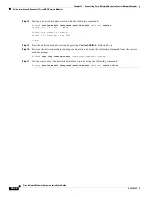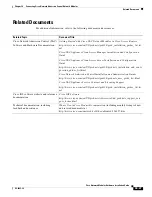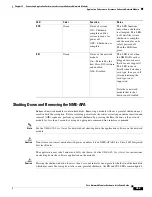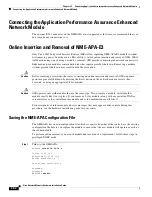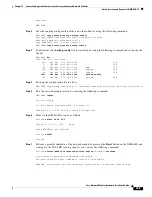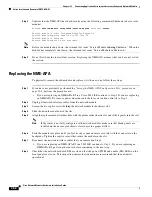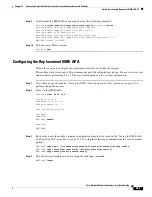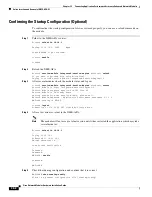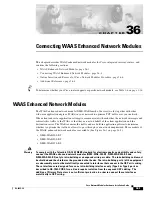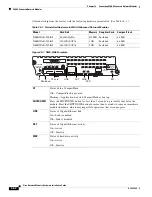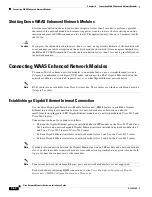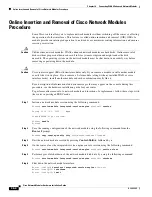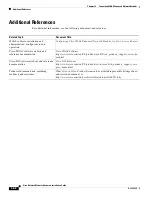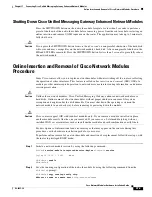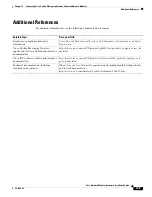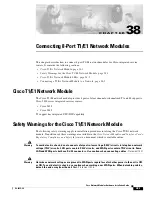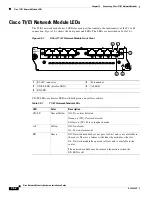
C H A P T E R
36-1
Cisco Network Modules Hardware Installation Guide
OL-2485-20
36
Connecting WAAS Enhanced Network Modules
This chapter describes WAAS enhanced network modules for Cisco integrated services routers, and
contains the following sections:
•
WAAS Enhanced Network Modules, page 36-1
•
Connecting WAAS Enhanced Network Modules, page 36-4
•
Online Insertion and Removal of Cisco Network Modules Procedure, page 36-6
•
Additional References, page 36-8
Tip
To determine whether your Cisco router supports a specific network module, see
Table 1-6 on page 1-16
.
WAAS Enhanced Network Modules
The WAAS enhanced network module (NME-WAE family of devices) works together with other
wide-area application engines (WAEs) in your network to optimize TCP traffic over your network.
When client and server applications attempt to communicate with each other, the network intercepts and
redirects this traffic to the WAEs so that they can act on behalf of the client application and the
destination server. The WAEs examine the traffic and use built-in application policies to determine
whether to optimize the traffic or allow it to pass through your network unoptimized. Three models of
the WAAS enhanced network module are available. (See
Figure 36-1 on page 36-2
.)
•
NME-WAE-302-K9
•
NME-WAE-502-K9
•
NME-WAE-522-K9
Warning
To comply with the Telcordia GR-1089 NEBS standard for electromagnetic compatibility and safety,
connect the WAAS enhanced network modules (NME-WAE-302-K9, NME-WAE-502-K9 and
NME-WAE-522-K9) only to intra-building or unexposed wiring or cable. The intrabuilding cable must
be shielded and the shield must be grounded at both ends. The intra-building port(s) of the equipment
or subassembly must not be metallically connected to interfaces that connect to the OSP or its wiring.
These interfaces are designed for use as intra-building interfaces only (Type 2 or Type 4 ports as
described in GR-1089-CORE, Issue 4) and require isolation from the exposed OSP cabling. The
addition of Primary Protectors is not sufficient protection in order to connect these interfaces
metallically to OSP wiring.


